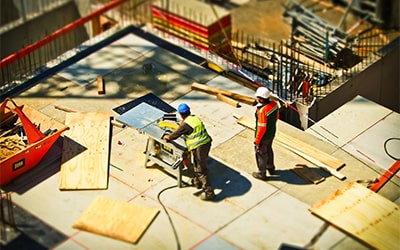
The Importance of Sustainable Building Materials in Modern Construction
In today's rapidly evolving construction industry, the emphasis on sustainability has never been more critical. As environmental concerns grow, builders and contractors are increasingly turning to sustainable building materials to reduce their carbon footprint and promote eco-friendly practices. This blog explores the significance of sustainable building materials and how they can benefit both the environment and your construction projects.
What Are Sustainable Building Materials?
Sustainable building materials are those that are sourced, manufactured, and utilized in a way that minimizes their environmental impact. These materials are often renewable, recyclable, or made from recycled content, ensuring that they contribute to a healthier planet. Examples include bamboo, reclaimed wood, recycled steel, and low-VOC (volatile organic compounds) paints.
Benefits of Using Sustainable Building Materials
1. Environmental Impact: By choosing sustainable materials, you help reduce waste and conserve natural resources. This practice not only protects ecosystems but also contributes to a healthier environment for future generations. 2. Energy Efficiency: Many sustainable materials offer superior insulation properties, which can lead to reduced energy consumption in buildings. This not only lowers utility bills but also decreases greenhouse gas emissions. 3. Healthier Indoor Environments: Sustainable materials often contain fewer harmful chemicals, improving indoor air quality. This is particularly important for residential buildings, where occupants spend a significant amount of time indoors. 4. Cost Savings: While some sustainable materials may have a higher upfront cost, they often lead to long-term savings through reduced energy bills and lower maintenance costs. Additionally, many governments offer incentives for using eco-friendly materials, further offsetting initial expenses. 5. Market Demand: As consumers become more environmentally conscious, there is a growing demand for sustainable building practices. By incorporating these materials into your projects, you can attract eco-minded clients and enhance your marketability.
How to Choose Sustainable Building Materials
Research: Investigate the sourcing and manufacturing processes of materials. Look for certifications such as LEED (Leadership in Energy and Environmental Design) or FSC (Forest Stewardship Council) to ensure sustainability. Local Sourcing: Whenever possible, choose materials that are locally sourced. This reduces transportation emissions and supports local economies. Lifecycle Assessment: Consider the entire lifecycle of the materials, from extraction to disposal. Opt for materials that are durable and can be recycled or repurposed at the end of their life.
Conclusion
Incorporating sustainable building materials into your construction projects is not just a trend; it’s a necessity for a healthier planet and a more sustainable future. By making informed choices, you can contribute to environmental preservation while also enhancing the quality and efficiency of your buildings. For your next project, consider partnering with TKR Building Materials to access a wide range of sustainable options that meet your construction needs.








